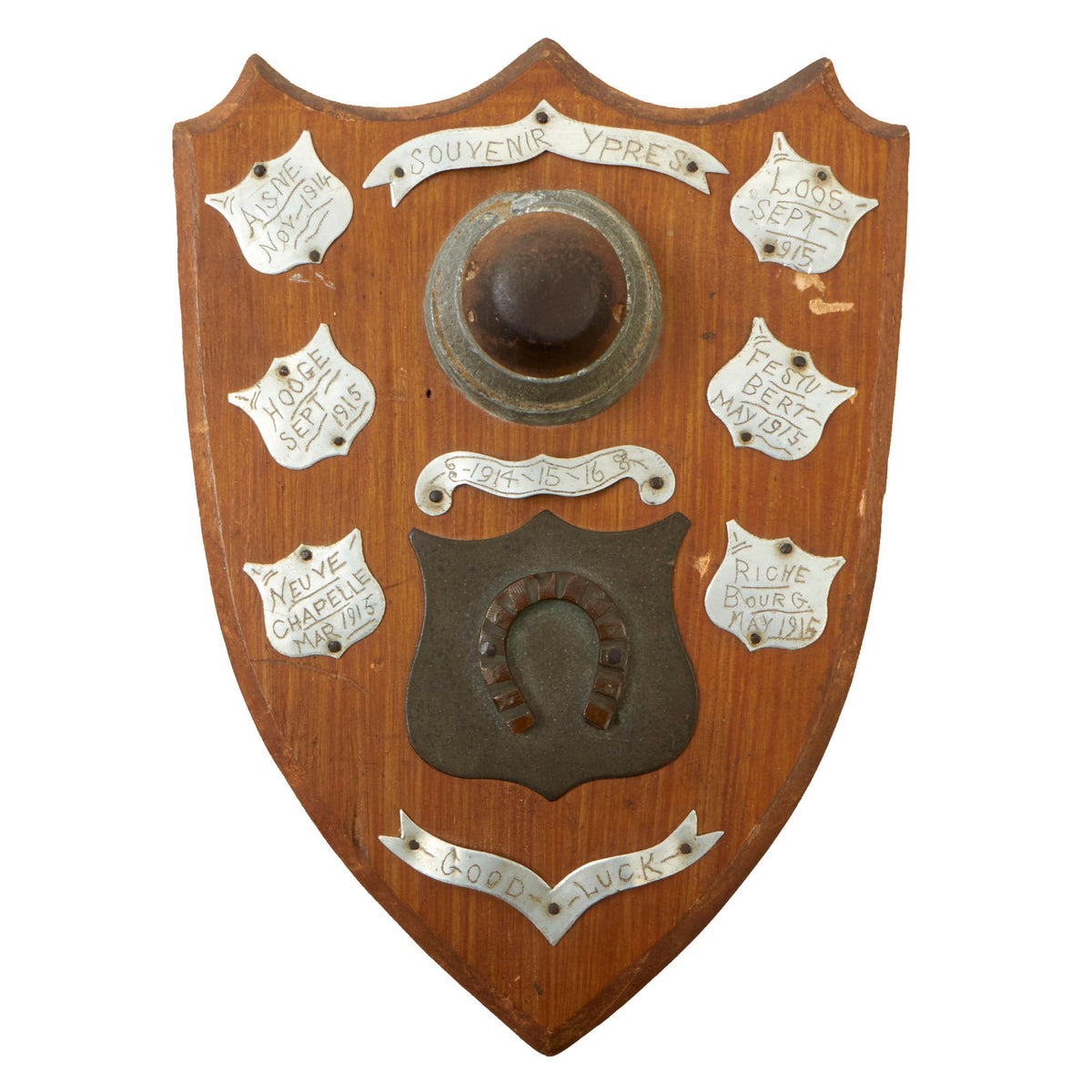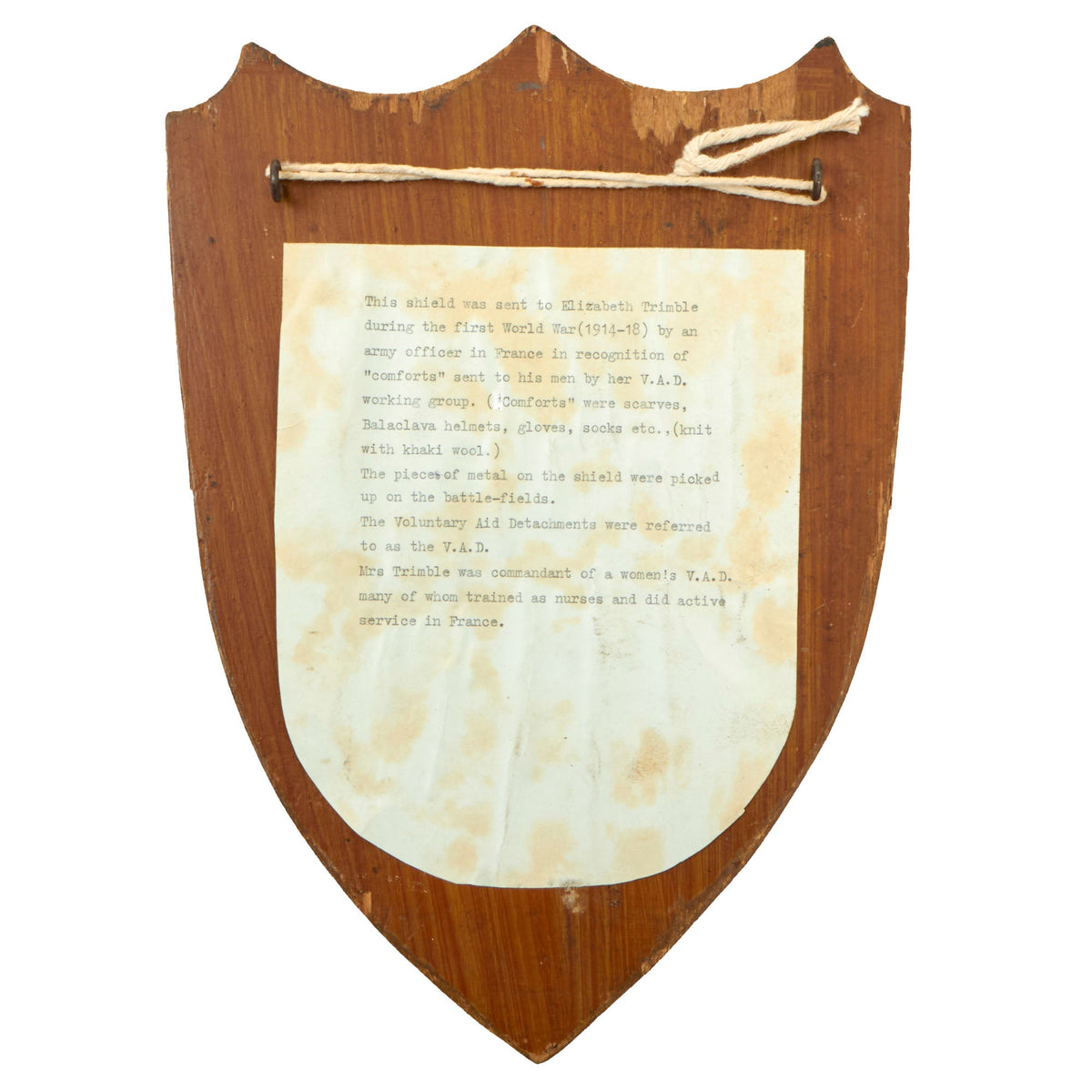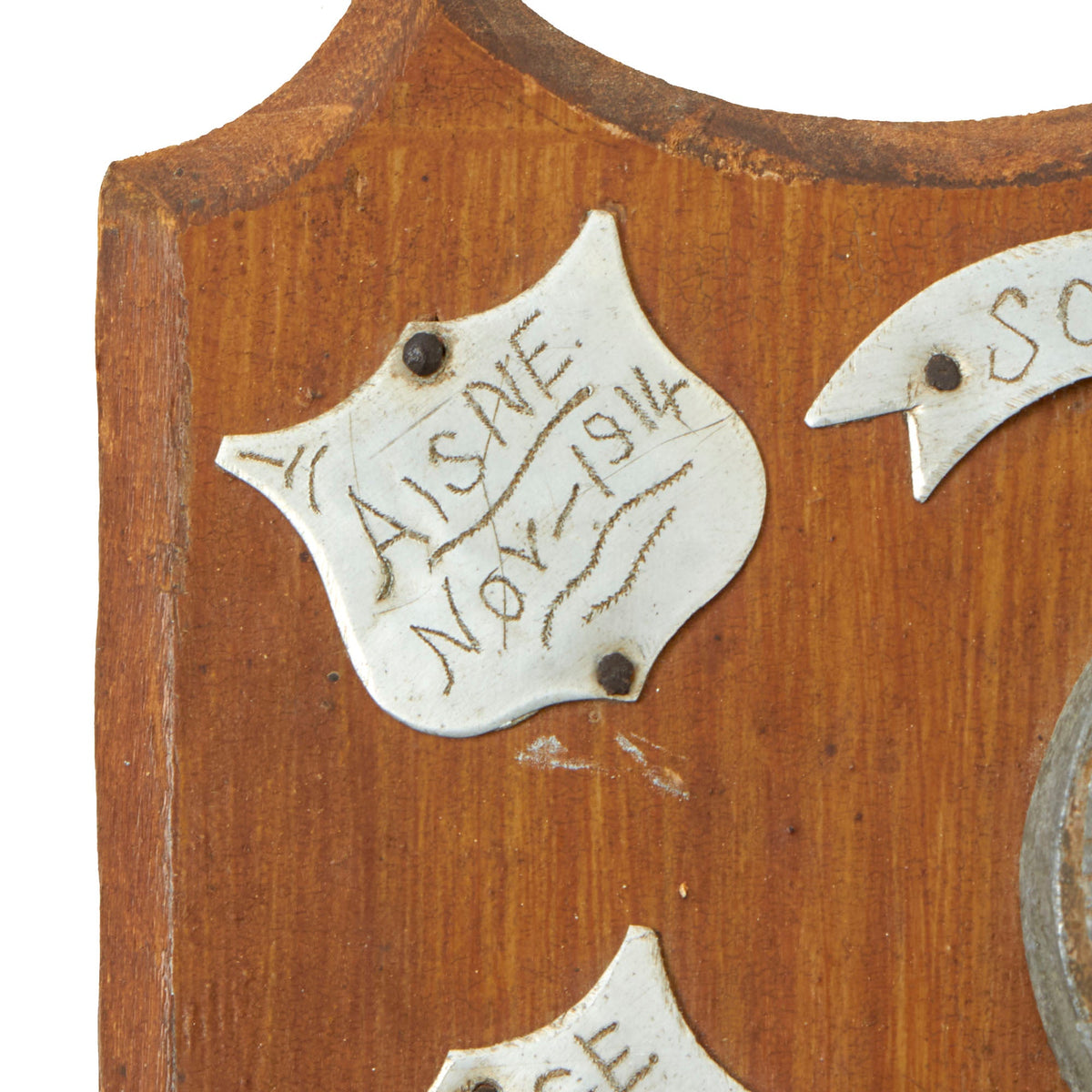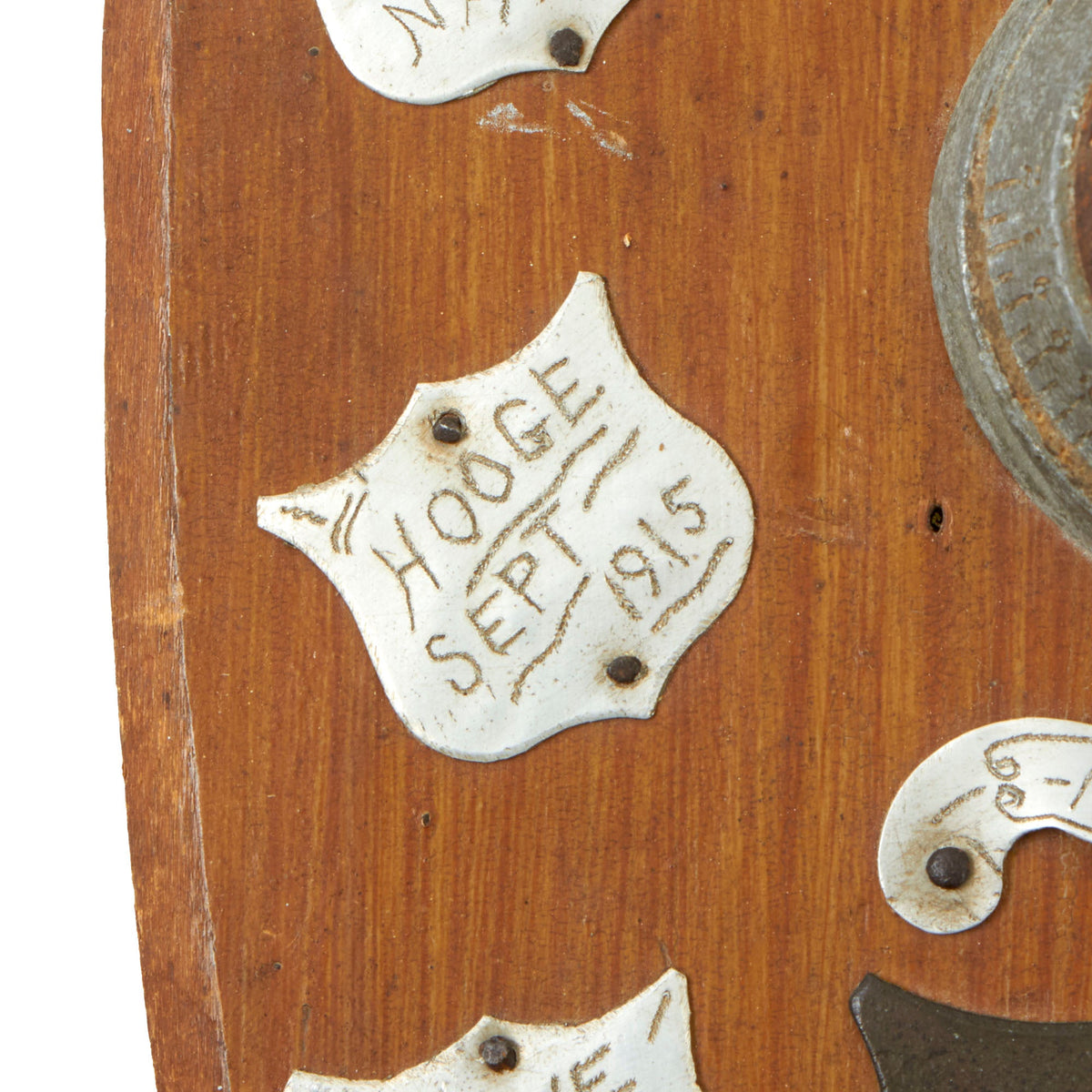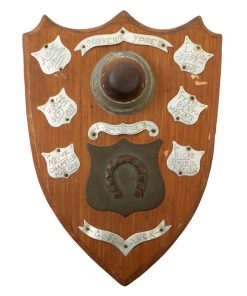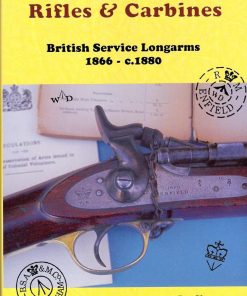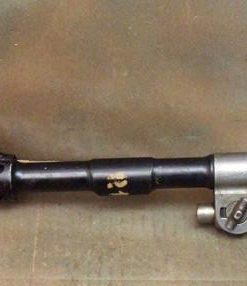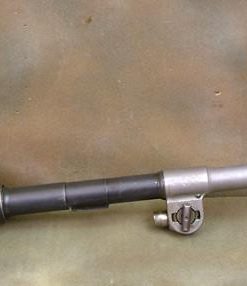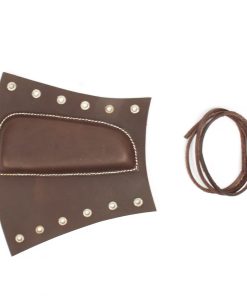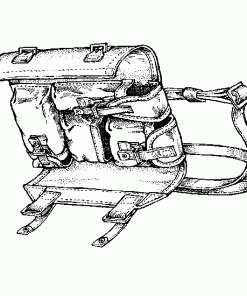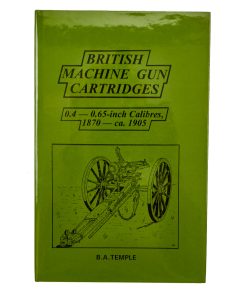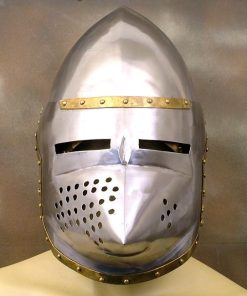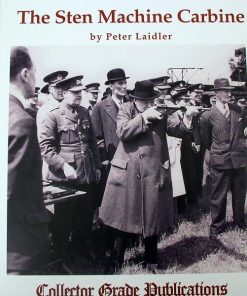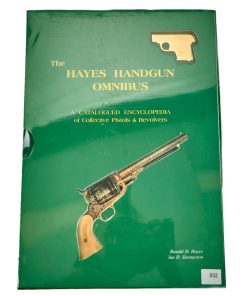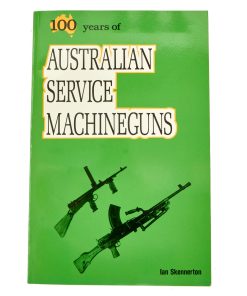Original British WWI Souvenir Wooden Shield with Battlefield Pickups Sent to Woman’s V.A.D. Leader Mrs. Elizabeth Trimble Original Items
$ 295,00 $ 118,00
Original Item: One-Of-A-Kind. This is a lovely British WWII Souvenir Wooden Shield measuring 10 ½”W x 7 ½”H, which is covered on the front side with battlefield pickup items. The largest of these is what looks to be an artillery fuze, and there is a bronze shield insignia with a horseshoe on it below this. Surrounding this are numerous small pieces of aluminum cut in shield and banner shapes, with the banners reading SOUVENIR YPRES, -1914-15-16 and – GOOD – – LUCK –. The shields on the sides bear the locations and dates of 6 WWI Battles on the Western Front, which include:
– AISNE NOV-1914
– HOOGE – SEPT 1915
– NEUVE-CHAPELLE MAR 1915
– LOOS – SEPT – 1915
– FESTU-BERT – MAY 1915
– RICHE-BOURG MAY 1915
We assume that these are the battles which the person who made the shield participated in during the War while they made the shield.
The rear of the shield has an affixed hand typed description of the item:
This shield was sent to Elizabeth Trimble
during the first World War (1914-1918) by an
Army officer in France in recognition of
“Comforts” sent to his men by her V.A.D.
working group. (“Comforts” were scarves,
Balaclava helmets, gloves, socks etc., (knit
with khaki wool.)
The pieces of metal on the shield were picked
up on the battle-fields.
The Voluntary Aid Detachments were referred
to as the V.A.D.
Mrs Trimble was commandant of a women’s V.A.D.
many of whom trained as nurses and did active
service in France.
A fantastic WWI souvenir with some great research potential. Ready to display!
The Voluntary Aid Detachment (VAD) was a voluntary unit of civilians providing nursing care for military personnel in the United Kingdom and various other countries in the British Empire. The most important periods of operation for these units were during World War I and World War II. Although VADs were intimately bound up in the war effort, they were not military nurses, as they were not under the control of the military, unlike the Queen Alexandra’s Royal Army Nursing Corps, the Princess Mary’s Royal Air Force Nursing Service, and the Queen Alexandra’s Royal Naval Nursing Service. The VAD nurses worked in field hospitals, i.e., close to the battlefield, and in longer-term places of recuperation back in Britain.
Fast Shipping with Professional Packaging
Thanks to our longstanding association with UPS FedEx DHL, and other major international carriers, we are able to provide a range of shipping options. Our warehouse staff is expertly trained and will wrap your products according to our exact and precise specifications. Prior to shipping, your goods will be thoroughly examined and securely secured. We ship to thousands clients each day across multiple countries. This shows how we're dedicated to be the largest retailer on the internet. Warehouses and distribution centres can be located throughout Europe as well as the USA.
Note: Orders with more than one item will be assigned a processing date depending on the item.
Before shipping before shipping, we'll conduct a thorough inspection of the items you have ordered. Today, the majority of orders will be delivered within 48 hours. The delivery time will be between 3-7 days.
Returns
The stock is dynamic and we cannot completely manage it because multiple stakeholders are involved, including our factory and warehouse. So the actual stock may alter at any time. It's possible that you may not receive your order once the order has been made.
Our policy is valid for a period of 30 days. If you don't receive the product within 30 days, we are not able to issue a refund or an exchange.
You can only return an item if it is unused and in the same state as the day you received it. You must have the item in its original packaging.
Related products
Uncategorized
Uncategorized
Uncategorized
Book: Small Arms ID by Ian Skennerton: .303 Rifle, No. 1, S.M.L.E Marks II & III New Made Items
Uncategorized
Australian WWII Owen MK1 Machine Carbine SMG Custom Fabricated Replica with Sling Original Items
Uncategorized
Uncategorized
Uncategorized
Uncategorized
Uncategorized
Uncategorized
Uncategorized
Armored Burgonet Helmet & Polearm from Scottish Castle Leith Hall Circa 1700 Original Items
Uncategorized
Uncategorized
Uncategorized
Book: Small Arms ID by Ian Skennerton: .303 Pattern 1914 Rifle & Sniping New Made Items
Uncategorized
